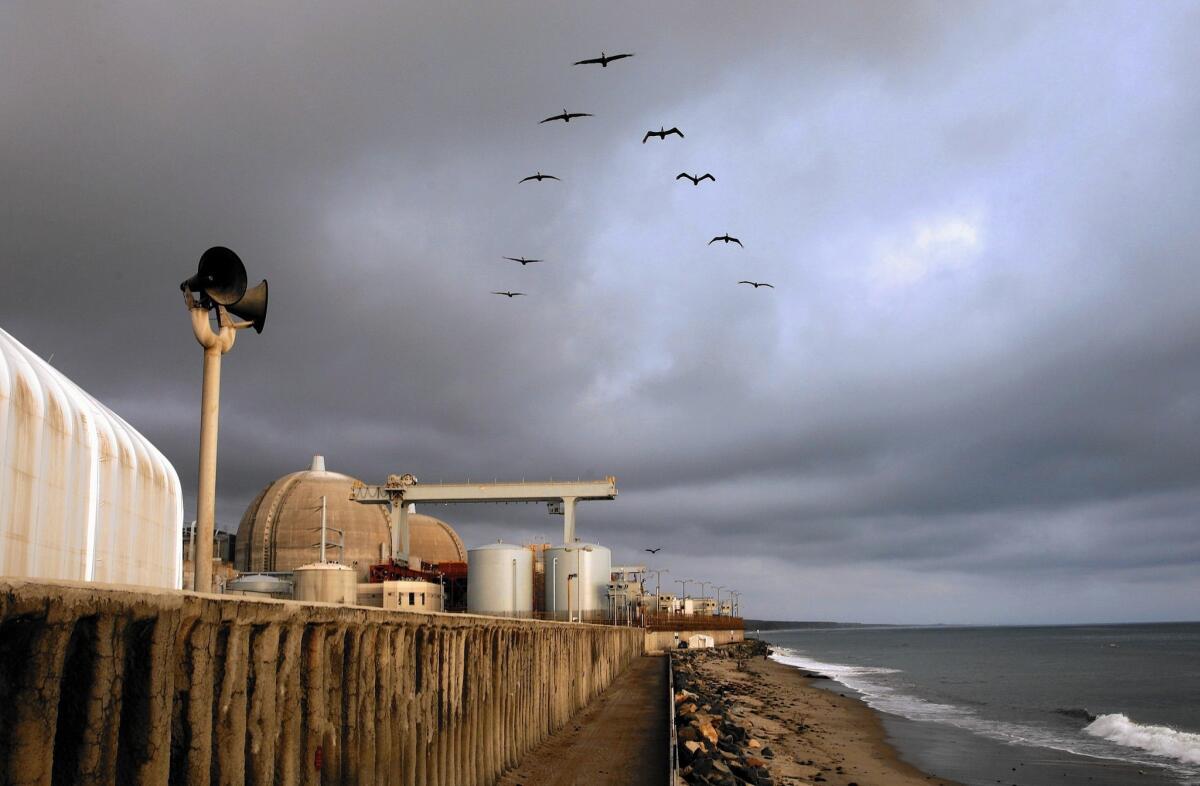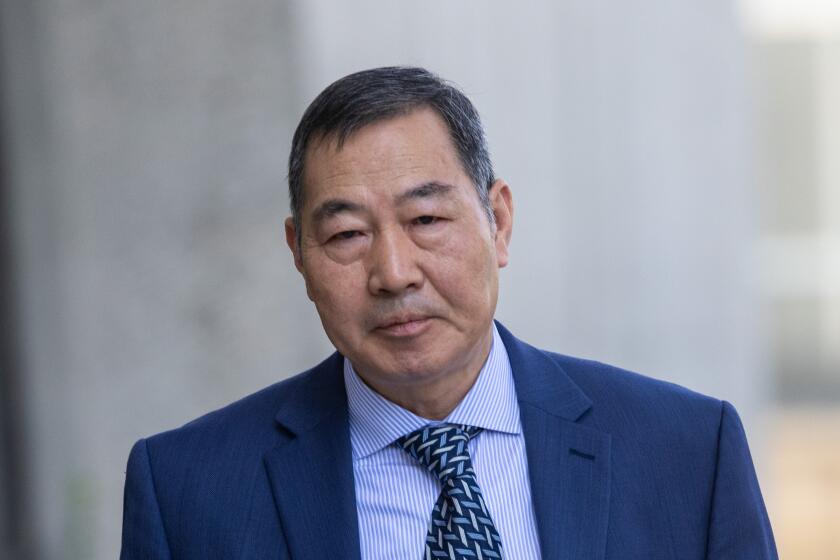Will California revisit the San Onofre settlement?

It’s California’s $4.7-billion question: whether to revisit the settlement splitting up the San Onofre nuclear plant’s closure costs, which left consumers on the hook for most of it. The decision rests with state regulators, who have no timetable or even requirement to act.
Southern California Edison this week urged the California Public Utilities Commission to reject requests by consumer advocates to reconsider the agreement the agency approved in November, more than two years after Edison discovered a small radiation leak in a new steam generator at San Onofre. The leak from the faulty equipment led the utility to permanently close the power plant.
The settlement required customers of Edison and minority owner San Diego Gas & Electric Co. to pay $3.3 billion of the shutdown costs.
Commissioners have seldom changed previous decisions, said Joe Como, director of the Office of Ratepayer Advocates.
“Process-wise, we don’t have any vehicle to force the commission to act,” Como said. “They can ignore it. All we can hope is that there is the weight of various parties and public opinion that will force them to take action.”
Como’s office and other consumer advocates urged the regulators to reconsider the settlement after revelations that former commission President Michael Peevey engaged in secret talks with Edison representative about a settlement prior to a decision by the agency. Those talks included one with Edison’s then-executive vice president for external relations, Stephen Pickett, during a junket in Warsaw, Poland.
Those “backchannel communications,” said Mindy Spatt, a spokeswoman for the Utility Reform Network, are “why the commission should take another look.”
On Thursday, Edison stated in a filing with the commission that the Office of Ratepayer Advocates’ assertions were unfounded.
“ORA’s petition alleges that President Peevey’s expression of views … in Warsaw on March 26, 2013, undermined the settlement negotiation,” Edison stated in its petition. “This allegation is both unsupported and illogical.
“As ORA is well aware, the settlement did not result from any ‘deal’ between President Peevey and Mr. Pickett, but instead resulted from many months of arm’s-length negotiations,” Edison stated.
Edison urged regulators to keep the settlement intact, stating in a filing with the commission that reconsideration of the agreement would cause “serious harm to the public.”
Reopening the case could hurt Edison’s lawsuit with the Japanese contractor that developed the faulty steam generators. The contractor, Tokyo-based Mitsubishi Heavy Industries, has said that Edison is seeking $7.6 billion for loss of the
San Onofre plant, a sum that Edison has declined to confirm.
Mitsubishi maintains that under the agreements for development of the steam generators, its liability is limited to $137 million.
“The allegations and demands made by those parties disregard the history of the contract negotiations and performance and are factually incorrect, legally unsound and inappropriate,” Mitsubishi said in a statement.
In addition to the reported claim against Mitsubishi, Edison has filed about $400 million in claims with Nuclear Electric Insurance Ltd., or NEIL, a consortium of power plant owners that provides insurance for the nation’s reactors. Money recovered from NEIL would go to the benefit of Edison customers.
Arnie Gundersen, a nuclear engineer who served as an expert witness regarding the handling of San Onofre’s generators, said at a minimum both Edison and Mitsubishi are at fault.
“When I reviewed all the data it was clear to me that Southern California Edison was the one driving the bus,” Gundersen said.
“Mitsubishi wanted the contract and agreed to some very onerous terms in order to get it.
Gundersen said the San Onofre case is similar to two incidents in Florida, where an agreement was reached over the closed Crystal River nuclear plant that led to billions in costs to consumers. In addition, he said, the St. Lucie nuclear plant had similar steam generator problems as San Onofre.
SIGN UP for the free California Inc. business newsletter >>
In the California and Florida cases, Gundersen said state and federal regulators gave the utilities a pass, while consumers bore the costs of the decisions.
The utilities “kept taking bigger and bigger risks,” Gundersen said. “Finally the risks got to the point where things broke.”
At San Onofre — just as with the nuclear plants at Crystal River and St. Lucie in Florida — Edison had hoped to increase the plant’s power and extend its life.
“Edison wanted too much. Mitsubishi promised too much.” Gundersen said.
Twitter: @ivanlpenn
ALSO:
Get your electronic health record: It’s your right
After losing Costco, American Express cuts deal with Sam’s Club
Lower L.A. gas prices coming soon? Exxon Mobil is poised to increase output at Torrance refinery
More to Read
Inside the business of entertainment
The Wide Shot brings you news, analysis and insights on everything from streaming wars to production — and what it all means for the future.
You may occasionally receive promotional content from the Los Angeles Times.











